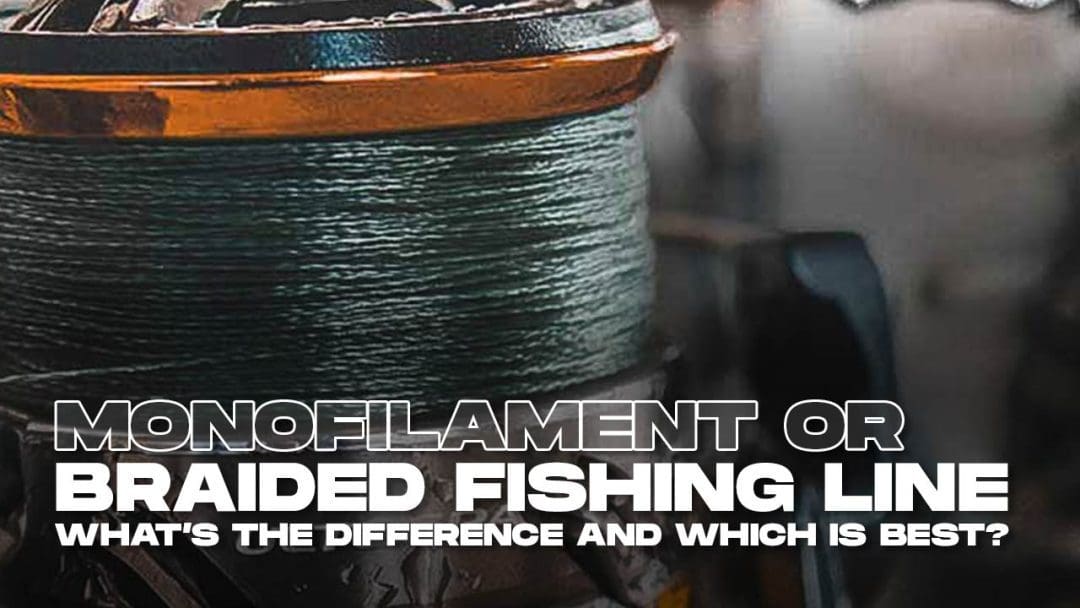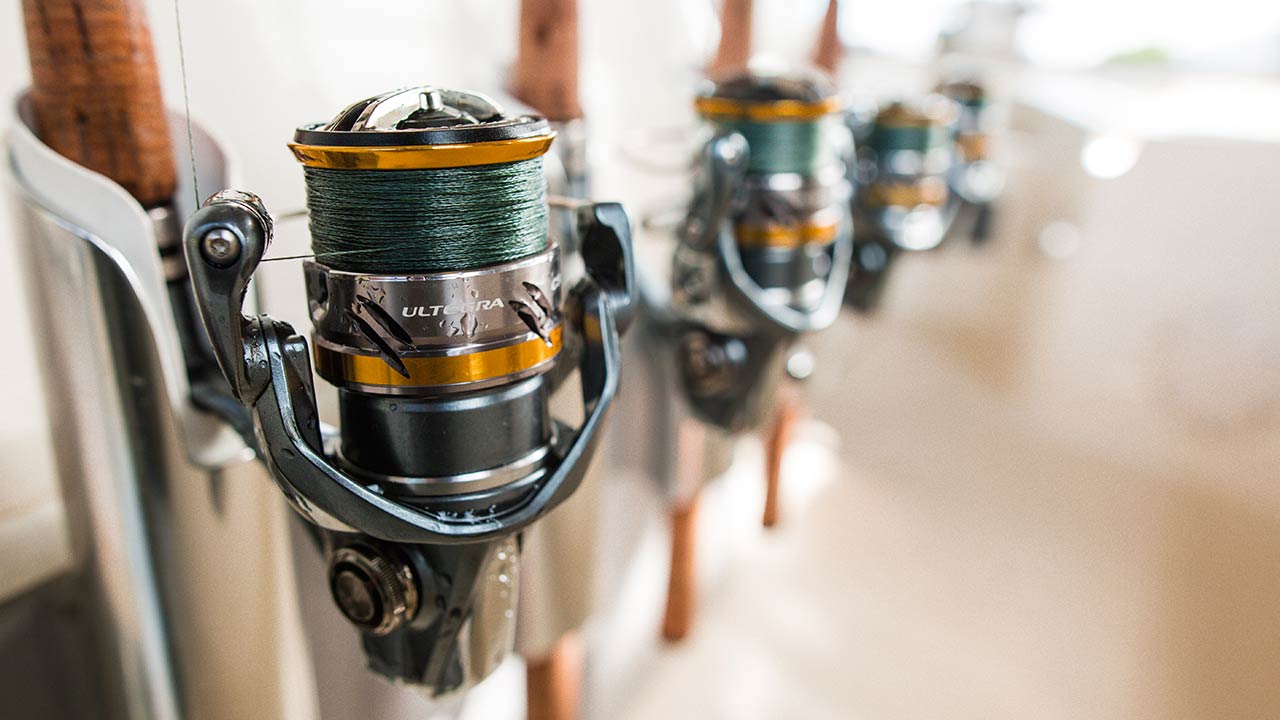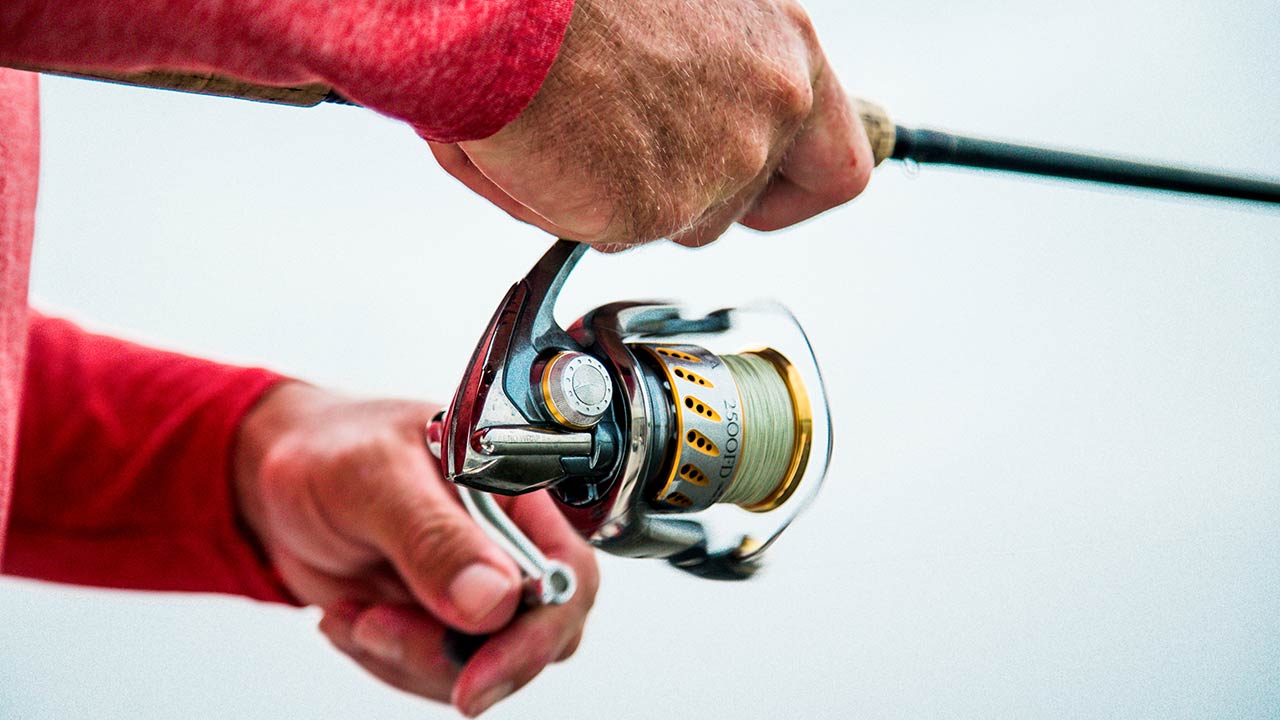Is Mono or Braided Fishing Line Better for Inshore Fishing?
When it comes to inshore saltwater fishing, choosing the right fishing line can make all the difference in the success of your trip. Two popular types of fishing lines are monofilament and braided fishing lines. Each has its own benefits and disadvantages, let’s discuss and explore each.
Benefits of Monofilament Fishing Line
Invisibility:
Monofilament fishing line is less visible in the water than braided fishing line.
This can be an advantage when fishing for species that are easily spooked, such as snook or redfish.
Stretch:
Monofilament fishing line has more stretch than braided fishing line.
This means that it can absorb more shock when a fish is fighting, which can help prevent the line from breaking.
Cost:
Monofilament fishing line is generally less expensive than braided fishing line, making it a more budget-friendly option.
Disadvantages of Monofilament Fishing Line
Diameter:
Monofilament fishing line has a larger diameter than braided fishing line of the same strength.
This means that it creates more resistance in the water, which can make it more difficult to cast.
Memory:
Monofilament fishing line can develop a “memory,” which means it can retain the shape of the spool it was wound on.
This can cause the line to twist and tangle, making it more difficult to cast.
Durability:
Monofilament fishing line is less durable than braided fishing line.
It can degrade more quickly in the sun and saltwater, which can lead to it breaking more easily.
Benefits of Braided Fishing Line
Sensitivity:
Braided fishing line is much more sensitive than monofilament fishing line.
This means that you can feel even the slightest bite or movement of the fish.
Diameter:
Braided fishing line has a smaller diameter than monofilament fishing line of the same strength.
This means that it creates less resistance in the water, making it easier to cast.
Durability:
Braided fishing line is much more durable than monofilament fishing line.
It can withstand exposure to the sun and saltwater without degrading, which makes it less likely to break.
Disadvantages of Braided Fishing Line
Visibility:
Braided fishing line is highly visible in the water, which can make it more difficult to catch fish that are easily spooked.
No Stretch:
Braided fishing line has very little stretch, which means that it can break more easily if a fish is fighting.
It also means that it can be more difficult to set the hook when you get a bite.
Cost:
Braided fishing line is generally more expensive than monofilament fishing line, making it a less budget-friendly option.
Monofilament vs Braided Fishing Line
Both monofilament and braided fishing lines have their own benefits and disadvantages for inshore saltwater fishing.
Monofilament Fishing Line
Monofilament fishing line is a good option for those on a budget, as it is less expensive than braided fishing line. It also has more stretch and is less visible in the water. However, it has a larger diameter, which can make it more difficult to cast, and it is less durable than braided fishing line.
Braided Fishing Line
Braided fishing line, on the other hand, is a good option for those who want a more sensitive line that is easier to cast. It is also more durable than monofilament fishing line. However, it is highly visible in the water and has very little stretch, which can make it more difficult to catch fish that are easily spooked or fighting hard.
Choosing the best fishing line for you
Ultimately, the choice between monofilament and braided fishing line comes down to personal preference and the type of fishing you’ll be doing. It’s important to consider all of the factors discussed above when making your decision.
Where Monofilament Fishing Line is Best
If you’re fishing in clear water and targeting species that are easily spooked, monofilament fishing line might be the better choice. If you’re fishing in rougher conditions and targeting larger, stronger fish, braided fishing line might be the better choice.
Fluorocarbon Fishing Line
Fluorocarbon fishing line is a popular choice for anglers who want a nearly invisible line in the water. It is made from a material that refracts light in a similar way to water, making it difficult for fish to detect.
We’ll explore some benefits and disadvantages of using fluorocarbon fishing line:
Benefits of Fluorocarbon Fishing Line
Invisibility:
Fluorocarbon fishing line is nearly invisible in the water, which can be a big advantage when fishing for species that are easily spooked.
Sensitivity:
Fluorocarbon fishing line is more sensitive than monofilament fishing line. This means that you can feel even the slightest bite or movement of the fish.
Abrasion resistance:
Fluorocarbon fishing line is more resistant to abrasion than monofilament fishing line. This means that it can withstand contact with rocks, sand, and other debris without breaking or fraying.
Disadvantages of Fluorocarbon Fishing Line
Cost:
Fluorocarbon fishing line is generally more expensive than monofilament fishing line, making it a less budget-friendly option.
Stiffness:
Fluorocarbon fishing line is stiffer than monofilament fishing line, which can make it more difficult to cast.
Durability:
Fluorocarbon fishing line can degrade more quickly in the sun and saltwater than monofilament fishing line, which can lead to it breaking more easily.
Monofilament Leaders
Monofilament leaders are a popular choice for anglers who want a more affordable and versatile option than fluorocarbon fishing line. Here are the benefits and disadvantages of using monofilament leaders:
Benefits of Monofilament Leaders
Versatility:
Monofilament leaders can be used in a wide range of fishing conditions and with many different types of lures or bait.
Cost:
Monofilament leaders are generally less expensive than fluorocarbon fishing line or steel leaders, making them a more budget-friendly option.
Stretch:
Monofilament leaders have more stretch than fluorocarbon fishing line, which can help prevent the line from breaking when a fish is fighting.
Disadvantages of Monofilament Leaders
Visibility:
Monofilament leaders are more visible in the water than fluorocarbon fishing line, which can make it more difficult to catch fish that are easily spooked.
Diameter:
Monofilament leaders have a larger diameter than fluorocarbon fishing line of the same strength.
This means that they create more resistance in the water, which can make it more difficult to cast.
Durability:
Monofilament leaders are less durable than fluorocarbon fishing line or steel leaders.
They can degrade more quickly in the sun and saltwater, which can lead to them breaking more easily.
Steel Leaders
Steel leaders are a popular choice for anglers who want a strong and durable option that can withstand the sharp teeth of many saltwater species. Here are the benefits and disadvantages of using steel leaders:
Benefits of Steel Leaders
Strength:
Steel leaders are much stronger than fluorocarbon fishing line or monofilament leaders. They can withstand the sharp teeth of many saltwater species without breaking.
Durability:
Steel leaders are very durable and can withstand exposure to the sun and saltwater without degrading.
Versatility:
Steel leaders can be used in a variety of fishing conditions and with many different types of lures or bait.
Disadvantages of Steel Leaders
Visibility:
Steel leaders are highly visible in the water, which can make it more difficult to catch fish that are easily spooked.
Rigidity:
Steel leaders are very rigid and can make it more difficult to cast or present bait in a natural way.
Cost: Steel leaders are generally more expensive than fluorocarbon fishing line or monofilament leaders, making them a less budget-friendly option.
Best Fishing Line May Be a Combination
It’s also worth noting that some anglers choose to use a combination of fishing line. For example, they might use braided fishing line as the main line and attach a length of monofilament or fluorocarbon fishing line as a leader. This can give you the benefits of both types of fishing line, while minimizing their disadvantages.
Each type of fishing line or leader has its own benefits and disadvantages for inshore saltwater fishing.
Choosing the Best Fishing Leader Line
Fluorocarbon Fishing Line for Invisibility
Fluorocarbon fishing line is a good option for those who want a nearly invisible line in the water, but it can be more expensive and less durable than other options.
Monofilament Fishing Line for a Budget Friendly Option
Monofilament leaders are a versatile and budget-friendly option, but they are more visible in the water and less durable than fluorocarbon fishing line or steel leaders.
Steel Fishing Leaders for Strength and Durability
Steel leaders are a strong and durable option, but they are highly visible in the water and can be more difficult to cast.
Making the Choice in Fishing Line
In the end, the choice of fishing line is just one of the many factors that can affect your success on the water.
Ultimately, the choice of fishing line or leader comes down to personal preference and the type of fishing you’ll be doing.
It’s important to consider all of the factors discussed above when making your decision. You may also want to experiment with different types of line and leaders to find what works best for you in different fishing conditions.
It’s important to experiment with different types of fishing line and techniques to find what works best for you. With a bit of practice and patience, you can improve your skills and enjoy the thrill of inshore saltwater fishing.
Get Hooked Up,
Subscribe to Landed Fishing
Our expert guides share tips and techniques, showcasing thrilling catches of popular fish species like redfish, snook, and tarpon.
Enjoy high-quality videos capturing the excitement of the catch and challenges in the Gulf of Mexico.



